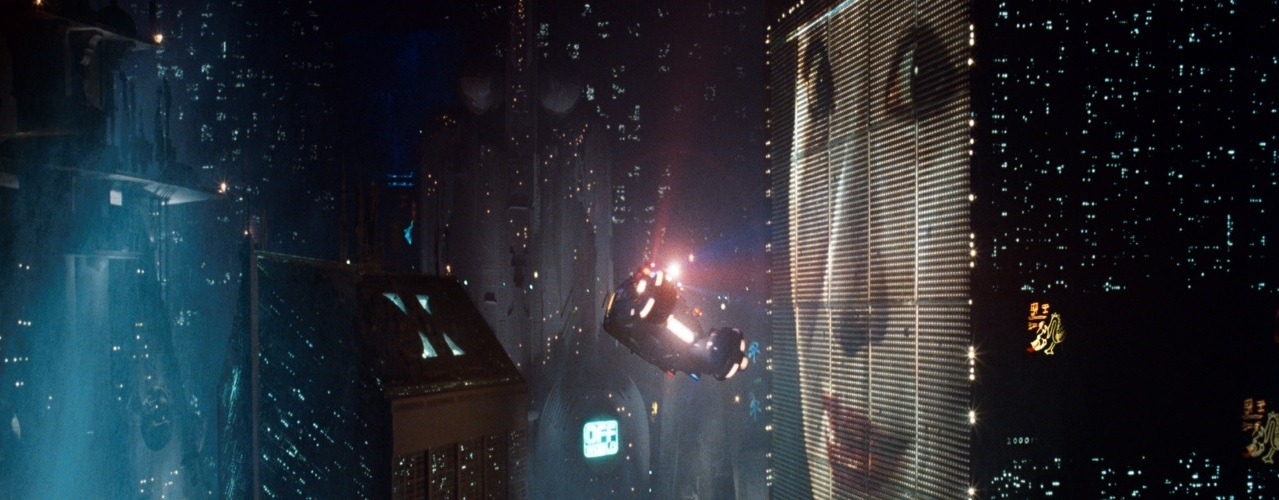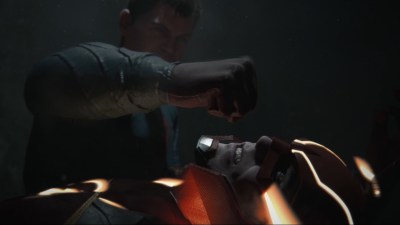Videogames based on movies get a pretty rough ride from gamers. Admittedly, there’s plenty of reason for this - most of them are horrendous. Often buggy, poorly-designed and rushed out simply to cash in on the latest cinema craze, they frequently show the industry at its least creative and most avaricious.
That’s not true of all movie-based games though. Occasionally, something comes along which bucks the trend and provides plenty of entertainment - sometimes even managing to eclipse the enjoyment gained from the film it’s based on.
Here’s our list of 5 Movie Spin-off games that don’t suck.
5. X-Men Origins: Wolverine
He’s the best there is at what he does, but what he does isn’t very nice. Unfortunately, the same can’t be said for the utterly dire film which saw Hugh Jackman’s portrayal of everyone’s favorite mutant stumble through dull set-piece after dull set-piece, before finally squaring off against a re-imagined version of Deadpool. The film drew the ire of fans up and down the land, and is now largely regarded an embarassment.
Thankfully, the game based on the film was actually pretty good. Set mostly before the events of the film, the game sees you playing as Logan and trying to piece together the events that led to his mutant military unit going their separate ways. As he takes damage, Logan’s body becomes battered and bruised, exposing his adamantium skeleton - until his healing factor kicks in and repairs the damage right before your eyes.
A neat combat system allows you to string together plenty of combos, while some of the game’s action set-pieces are far more imaginative than the woeful movie that spawned it. Take the Sentinel, for example: about halfway through the game, Logan infiltrates a secret facility manufacturing giant, mutant-hunting robots called Sentinels. After shutting down the facility, the end of the level sees you facing off against one of the giant robots in a courtyard, before later dismantling it piece by piece in an extended skydiving sequence.
Throw in plenty of unlockable costumes, upgradable abilities, and some attractive (for the time) graphics, and the result is a game that feels as though it’s everything the film should have been, but wasn’t - fun, filled with action and with plenty to keep you going back for more.
4. Spider-Man 2
The second superhero-themed entry on this list is arguably the first game to really nail the feeling of being Spider-Man. Let loose in a vast, open-world recreation of New York, simply swinging around the city is an absolute joy, while the graphics are incredibly impressive for the time.
With a satisfying combat system, decent animation and plenty to do, Spider-Man 2 is a game which ended up being just as much fun as the film on which it was based. Subsequent Spider-Man games haven’t always fared as well: the less said about Spider-Man 3, the better (both the game and the film); but Spider-Man 2 holds a special place in the heart of many gamers for finally allowing them to act out their fantasy of being the wall-crawler.
3. LEGO Star Wars
These days, LEGO games are so ubiquitous that it’s hard to remember a time when they weren’t so popular. From Batman to The Hobbit and Marvel Superheroes, Traveller’s Tales has become adept at taking popular franchises and adapting them into the familiar brick-based form we all know and love.
It all began back in 2005 with the release of LEGO Star Wars, which re-imagines the prequel trilogy as a light-hearted collect-em-up. No scene is safe from the developers’ wry sense of humor, with even the darkest of scenes twisted into a laugh-out-loud parody. A year later, the original film trilogy was adapted, before a combined release meant that fans were able to experience the entire series in LEGO form - replete with plenty of hidden unlockables and a metric ton of fan-service.
LEGO Star Wars might not be the best LEGO game ever made, and fans will debate for years which title that award should go to - but it’s certainly one of the better Star Wars games of recent years, and definitely more fun than the prequel trilogy of films.
Plus, you get to repeatedly smash Jar Jar Binks into little pieces. Who doesn’t want to do that?
2. Goldeneye
What? You expected this to be in the top spot? Think again.
Rare’s accomplished first-person shooter for the N64 proved long before Halo that the FPS genre could work well on console. Originally conceived as an on-rails shooter, Goldeneye mutated over the course of its extended development (it was released two years after the film, following numerous delays) into one of the most critically-acclaimed and loved titles of all time.
Some creative license sees Rare putting its own spin on some of the film’s events, while replayability is offered in the form of different difficulty settings; in a clever move, playing levels on higher difficulties adds additional objectives to complete, rather than simply increasing the health of your enemies or their damage output.
Goldeneye‘s multiplayer modes are the real star, however. Up to 4 players can battle it out across a series of maps which take inspiration from the entire history of the film franchise, while players could take the role of iconic villains such as Baron Samedi, Scaramanga and Oddjob (screw you Oddjob!). Meanwhile, a variety of modes named after various Bond movies ensured that there was plenty of fun to be found - Licence to Kill saw players killed after a single shot (the only mode where the famously rubbish Klobb weapon was actually an asset), while The Man With the Golden Gun was a mad scramble to the center of the map in order to pick up the titular weapon, which once collected, could only be obtained by killing the person wielding it.
Rare went on to use their work on Goldeneye as the basis for Perfect Dark, another excellent shooter, while numerous developers over the years have attempted to replicate the success of Goldeneye in their own games. While some of those efforts have been fairly enjoyable, others - such as 007 Legends - have been utterly woeful.
While these days Goldeneye feels dated, with some ugly graphics and textures compared to today’s standards, and a control scheme that feels unnatural in the age of dual analogue controls, Goldeneye remains one of the most memorable achievements in gaming history.
1. Blade Runner
Ridley Scott’s seminal sci-fi noir film Blade Runner is hailed by many as one of the best films ever made. From its fantastic imagining of a dystopian future Los Angeles, to its superlative soundtrack by Vangelis, it’s a film which has stood the test of time remarkably well. In the film, Harrison Ford plays Deckard - a man tasked with hunting down a number of escaped replicants - essentially, genetically-engineered superhumans.
When Westwood Studios - then famous for creating the Command & Conquer franchise - was approached to create a game based on the film, the weight of expectation on their shoulders must have been daunting. Somehow though, they carried the task off with aplomb and released a game which still stands up amazingly well today, some 16 years later.
Rather than follow the events of the film, the game instead casts the player as Ray McCoy: another Blade Runner who, like Harrison Ford’s character from the film, is on a mission to hunt down a number of escaped Replicants. Events run parallel to events in the movie, though the two don’t cross over - aside from a few references here and there in spoken dialogue and a few familiar locations.
Taking the form of a point-and-click game, Westwood utilized several clever techniques which to this day are rarely imitated. The game progresses in real-time, and certain events and evidence can be missed if the player isn’t in the right place at the right time. In addition, characters were randomly determined to be a Replicant or Human, aiding replayability. Thirteen endings are available, determined by a number of factors. After discovering a Replicant, you can choose to dispatch them or side with them, facilitating their escape from the city.
Where Blade Runner stands out is in Westwood’s exacting recreation of the look and feel of the film. The developer perfectly recaptures the atmosphere of the Los Angeles as portrayed on celluloid, with dark, rain-soaked streets, decrepit buildings and neon signs flickering in the darkness. You can use the Voight-Kampff machine to interrogate suspects and determine whether or not they’re human; and you’ll use the scanner in your apartment to zoom in on photos and evidence, uncovering vital clues. In a wonderful nod to the film, players are also able to determine for themselves whether or not McCoy himself is a Replicant.
Blade Runner is an utterly fantastic game, and aside from some occasionally awkward shooting sections, there’s very little that can be said to criticize it. In recreating the look and feel of the film, Westwood crafted what is possibly one of the most authentic interpretations of a movie ever attempted - at least until Alien: Isolation is released later this year - while some of the innovations still impress today.
It’s a shame that a sequel never materialized, and that Westwood was later absorbed into EA’s empire before being ignominiously dissolved several years later, after being relegated to churning out never-ending sequels to Command & Conquer. Based on the evidence on show in Blade Runner, Westwood was capable of far more invention than simply iterating on the well-trodden formula of building bases and ordering units around top-down maps.


